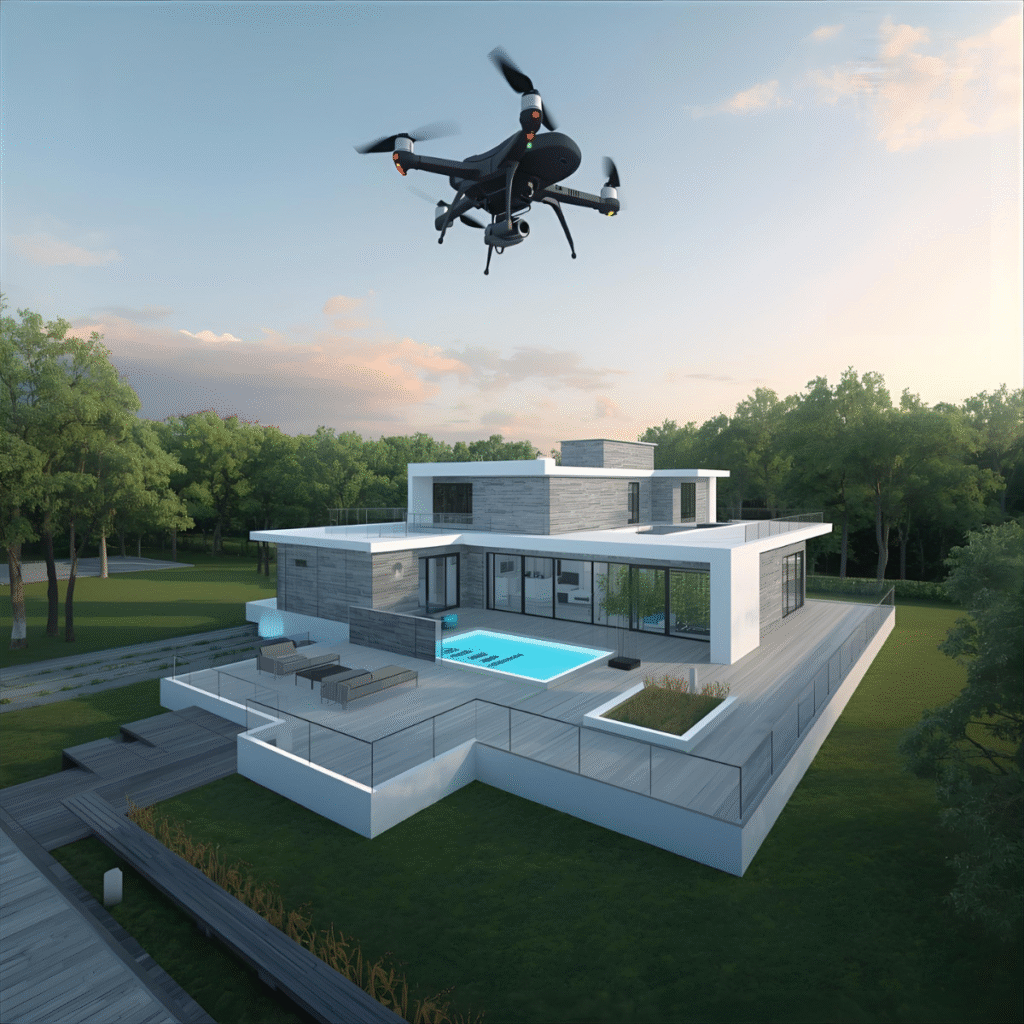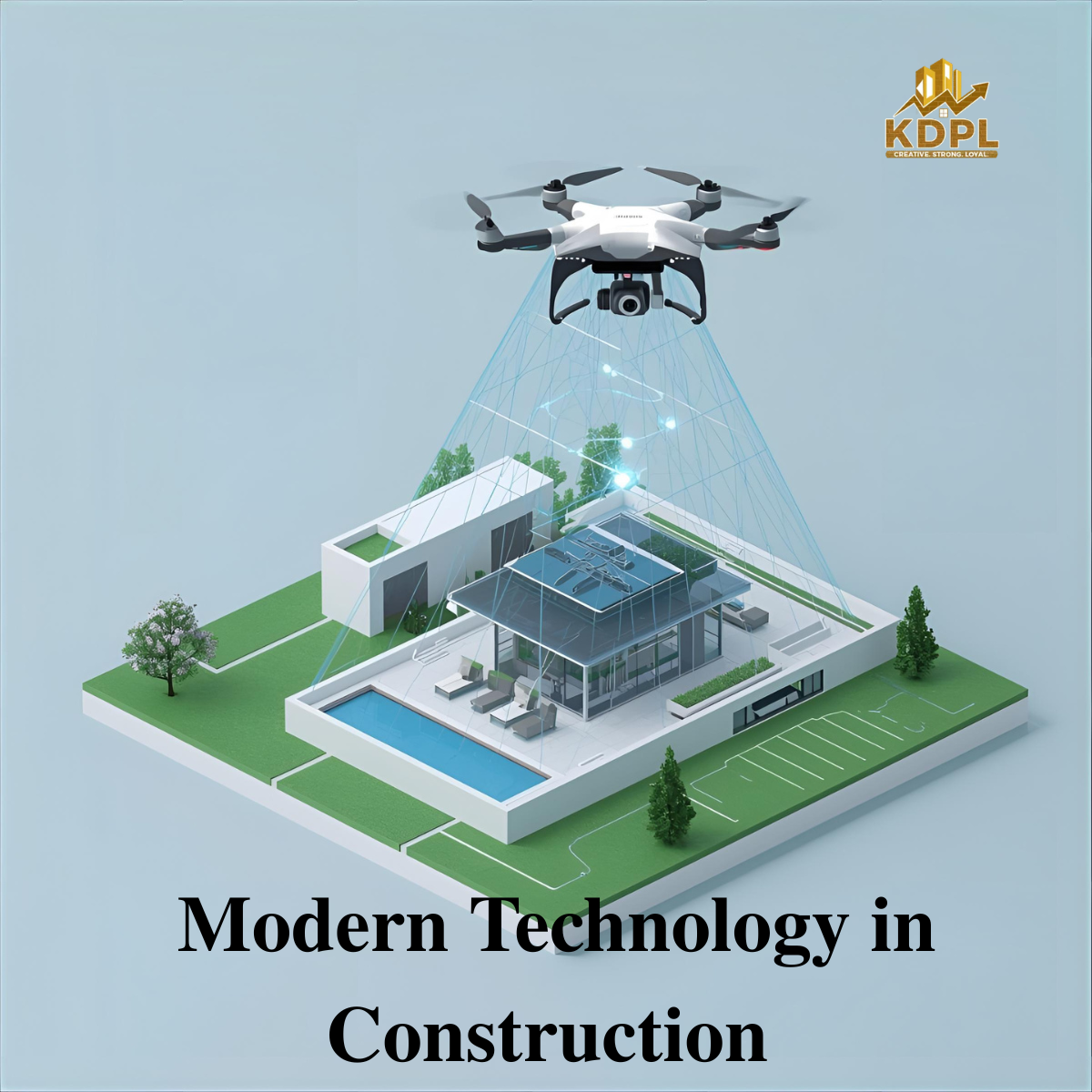The construction industry has always been one of the most dynamic sectors, constantly evolving with the demands of society. In today’s world, modern technology in construction has completely transformed how buildings are designed, planned, and executed. From artificial intelligence (AI) and drones to 3D printing and digital design tools, these innovations are not only improving efficiency but also redefining the possibilities of architecture and engineering.
For clients, contractors, and architects, the adoption of new technologies means faster timelines, reduced costs, safer worksites, and more sustainable buildings. For example, if you are looking for the top construction company in Lucknow, chances are that the firms you consider will already be using AI-based project management, drone monitoring, or 3D visualization to improve results.
In this blog, we’ll take a deep dive into how modern technology is changing construction, the benefits it brings, and how services like house map design, interior design company expertise, and 3D interior design tools are all enhanced by these advancements.
The Shift Towards Technology in Construction
Traditionally, construction was labor-intensive, dependent on manual drawings, and often faced challenges such as delays, budget overruns, and communication gaps. With the integration of modern technology in construction, these issues are being addressed more effectively. Today, digital tools allow engineers and architects to plan every detail in advance, visualize projects in 3D, and even test structures virtually before a single brick is laid.
For example, house map design has evolved from basic hand-drawn sketches to advanced CAD and BIM (Building Information Modeling) platforms. Clients can now see detailed layouts, including room sizes, lighting arrangements, and furniture placement, long before construction begins. This not only saves time but also minimizes costly mistakes.
Artificial Intelligence (AI) in Construction
AI is at the forefront of modern technology in construction. Its applications range from project planning to risk management.
- Project Scheduling: AI algorithms analyze data from past projects to predict potential delays, resource shortages, or cost escalations.
- Safety Monitoring: Cameras powered by AI can identify safety hazards on-site, ensuring compliance with safety rules.
- Design Optimization: AI helps architects and an interior design company create more efficient layouts by analyzing space usage and energy consumption.
Imagine working with a top construction company in Lucknow that uses AI tools to provide you with real-time updates on construction progress and even predictive insights into completion timelines. This not only enhances transparency but also builds trust with clients.
Drones in Construction
Drones are another major technological advancement that has revolutionized site management. These aerial devices provide high-resolution images and videos of construction sites, offering advantages such as:
- Surveying and Mapping: Instead of spending weeks on manual land surveys, drones complete them in hours with accurate data.
- Progress Monitoring: Clients and contractors can track daily progress remotely.
- Safety Inspections: Drones access hard-to-reach areas like rooftops or bridges, reducing risks to workers.
For large residential projects or commercial developments, drones save time and ensure that everything from the house map design to the structural alignment is executed precisely.
3D Printing in Construction
3D printing is one of the most exciting innovations in modern technology in construction. It allows structures to be printed layer by layer using concrete or other materials.
- Speed: A small house can be 3D printed in days rather than months.
- Cost-Effectiveness: By reducing material wastage, 3D printing cuts costs significantly.
- Customization: Homeowners can personalize every detail, from floor plans to wall textures.
This technology also works hand in hand with 3D interior design, enabling clients to preview and adjust interiors digitally before implementing them in reality.

Virtual Reality (VR) and Augmented Reality (AR)
VR and AR are becoming common tools for interior design companies and architects. They allow clients to “walk through” a digital model of their home or office before construction begins.
- VR Tours: You can experience the size, design, and flow of your future living room or bedroom in a virtual environment.
- AR on Site: AR apps overlay digital designs onto real-world construction sites, helping workers follow the exact plan without confusion.
For instance, if you’re investing in a property in Lucknow and working with a top construction company in Lucknow, VR tools can give you confidence in design decisions before spending money.
Smart Building Materials
Technology has even advanced construction materials. Innovations like self-healing concrete, energy-efficient glass, and modular construction panels are enhancing both durability and sustainability.
When paired with smart house map design and eco-friendly 3D interior design, these materials reduce long-term maintenance costs and improve living comfort.
Benefits of Modern Technology in Construction
The adoption of new technologies has transformed construction practices. Here are some key benefits explained in simple terms:
- Faster Construction Timelines – AI project scheduling and 3D printing save months of labor.
- Improved Safety – Drones and AI monitoring minimize risks.
- Cost Savings – Efficient designs and reduced wastage lower overall budgets.
- Customization – With VR, AR, and digital design tools, clients can make personalized choices easily.
- Sustainability – Green building materials and energy-efficient designs align with modern eco-friendly goals.
The Role of Interior Design in Modern Construction
While much focus is on external structures, interiors play a huge role in modern projects. An experienced interior design company uses 3D modeling and smart tools to create spaces that are not only beautiful but also functional.
For example:
- Bedroom Interiors: 3D visualization helps select colors, furniture, and lighting.
- Kitchen Interiors: Modular designs allow efficient use of space.
- Office Spaces: AR helps visualize seating arrangements for productivity.
When paired with the work of a top construction company in Lucknow, interiors are seamlessly integrated into the larger construction process.
The Future of Modern Technology in Construction
The future promises even greater integration of digital tools and automation. We may soon see:
- Fully automated construction sites run by robotics.
- AI-driven sustainable city planning.
- More widespread use of 3D printing for affordable housing.
The possibilities are endless, and embracing technology ensures that clients and contractors remain ahead of the curve.
FAQs
How is AI used in construction?
AI is used for project scheduling, safety monitoring, and design optimization. It helps predict potential delays and enhances efficiency.
Are drones safe for construction monitoring?
Yes, drones are widely used for surveying, progress tracking, and safety inspections. They reduce manual risks and provide accurate data.
Can 3D printing build an entire house?
Yes, 3D printing can construct full homes in a fraction of traditional time, offering cost and material efficiency.
Why should I choose a top construction company in Lucknow that uses modern technology?
Because modern technology ensures timely delivery, cost savings, and higher quality standards. It also gives you more control and transparency.
How does technology help with interior design?
Tools like VR, AR, and 3D interior design allow clients to preview spaces before implementation, ensuring satisfaction with the final result.
